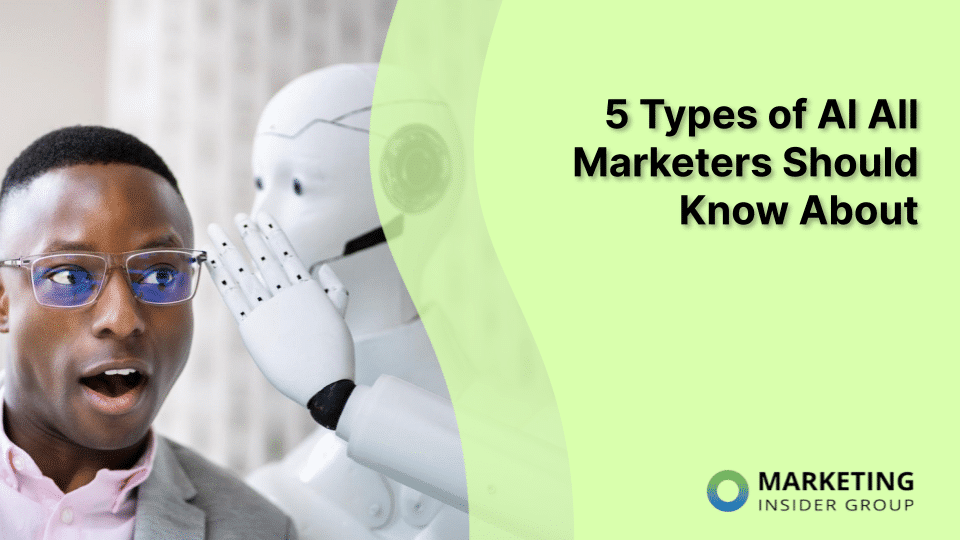
30 (or So) Terms Every Sales and Marketing Professional Should Know
The marketing field is always evolving and to succeed, every marketing professional needs to keep up with the latest in industry trends, including its ever-expanding glossary.
Marketers are naturally good at talking the talk; it’s kind of in our job description. Fortunately, these terms are pretty straightforward, you just need a little context to get the gist of things. Get these 30 words down and never get caught flat-footed in a meeting again.
Here are some of the terms every sales and marketing professional needs to know:
A/B Testing. This refers to the process of testing two different variations of a single variable to determine which one performs best. A/B testing is most prominent when optimizing email marketing, CTAs, landing pages, forms, and content in general.

Churn Rate. This is a metric that measures what percentage of your customers you retain. It can be calculated by measuring the number of customers lost as a percentage of your total customer base.
AIDA. An acronym that stands for “Attention/Awareness, Interest, Desire, and Action.” These are the four steps involved in the so-called purchase funnel.
Buyer Persona: These are carefully crafted representations of an ideal customer based on real-life market research and data from actual, existing customers. These personas help marketers understand who they are talking to and how best to communicate with them.
Adoption Process. Sometimes called “the buying process,” this refers to the stages a potential customer goes through—from learning to purchasing or rejecting.
BANT. An acronym that stands for “Budget, Authority, Need, and Timeline.” This acts as a framework to help determine whether or not a prospective customer is ready to make a purchase.
Closed Opportunities. This umbrella term includes “closed-won” and “closed-lost” opportunities. Closed-won refers to deals that resulted in a purchase, while closed-lost refers to deals that ended in rejection.
Cold Calling. Refers to unsolicited calls made by sales representatives in the hopes of selling to new customers.
Cross-Selling. An activity whereby a sales representative offers more than just one product or service. Usually, these products or services are complementary to the one already purchased by the customer.
Bounce Rate. When talking about website visits, bounce rate refers to the proportion of visitors that land on your page and leave without clicking on anything. For emails, bounce rates refer to the email messages that were unable to be delivered to a recipient’s inbox due to incorrect addresses or any other adverse circumstance.
Blogging. Refers to the act of creating and maintaining a web log or weblog. This can be a personal blog or a business blog that contains various types of content including commentaries, event coverage, photos, videos, and anecdotes.
Business blog. Refers to non-personal blogs that help marketers drive more traffic to their website, which then, convert to leads. A business blog often covers topics that are related to the company’s products or services which help the brand increase their online presence and brand authority.
Content. Refers to any information designed to be consumed by a particular audience. Media typically comes in the form of blogs, articles, videos, images, slideshows, podcasts, webinars and social media posts.
Editorial Calendar. This is the “road map” of an organization’s content creation. This helps content marketers keep track of what they need to publish and when they need to release it.
Crowdsourced Content. Also known as User-Generated Content (UGC), refers to content created from data you collect from subject matter experts, freelancers, and customers. This helps marketers produce relevant, high-quality content in less time while using fewer resources.
Call-to-Action. This can be in the form of a button, image, or text link that entices the online visitor to click on it and visit a landing page. A CTA essentially helps convert visitors into leads.
Cost-per-Lead (CPL): Refers to the average cost of acquiring one lead for your business. Calculated by dividing total spend by the number of leads acquired.
Conversion Path: The course of touchpoints, interactions, and actions a lead or prospect will go through until they become a paying customer. This can include downloading an ebook, watching a webinar, or a phone call with a sales rep.

Customer Acquisition Cost (CAC): Refers to the total cost of your sales and marketing activities to source a prospect and convert them into a paying customer.
Key Performance indicators (KPIs): These refer to the metrics marketers monitor to track their progress in the pursuit of their goals. Popular KPIs include cost-per-click, traffic, likes, shares, and conversion rates.
Customer Relationship Management (CRM). This refers to the practices, strategies, and technological solutions used to manage customer interactions with a brand. CRM systems use data from the customer lifecycle to build, improve and maintain relationships with customers.
Decision-Maker. Refers to the person (or role) responsible for making the final sales decision.
Engagement Rate. This refers to the amount of interaction received by a brand, usually in social media. This can come in the form of likes, shares, comments, and views.
Evergreen Content. This is a type of content that stands the test of time. These highly-prized pieces of content remain popular in searches long after their publish date due to their concepts and execution. Evergreen content helps websites increase their traffic and build brand awareness.
Friction. This is anything that prevents an activity from being executed smoothly. For example, friction on your website could be “lack of whitespace” which makes it harder for users to read your content and could negatively affect bounce rates or conversion rates.
Gatekeeper. Refers to the person (or role) responsible for enabling or preventing information from reaching another person within the company. The best example of gatekeepers are personal assistants and receptionists.
Landing Page. Refers to a website page containing a form that is used for lead generation. A landing page usually relates to a promotional offer such as an eBook or a Webinar.
Inbound Marketing. Refers to any marketing activity that draws potential customers in. This is opposed to the traditional practice of reaching out to customers with promotional messaging.
Personalization. In marketing, this is when you curate your content to fit the user’s preferences. For instance, personalization happens when a site recommends related items the user might be interested in. This is also commonly used in email marketing to increase engagement.
TOFU MOFU BOFU: Refers to the various stages in the sales funnel. In a nutshell, Top of Funnel (ToFu) is the problem identification stage, Middle of Funnel (MoFu) is the option consideration stage and Bottom of Funnel (BoFu) is the purchase decision stage.
UX. This acronym stands for User Experience, which is what the customer experiences during the entire process of using a product. This includes marketing messages, actual product use, customer support, and other brand touchpoints.
Do you know of any other important terms that we may have missed? Let us know in the comments below!







Dear Johanna: Thank you for the great article and useful links. Perfect for reviewing the basics and for sharing with clients, prospects.
Re: Suggestions for your Part 2 follow-up, How about Account-Based-Marketing, Evergreen Content, Stakeholders, Marketing Funnel, Influencers, Conversions?
BTW, was there a reason you didn’t alphabetize the list? (Not a criticism, just wondering…)
Roger